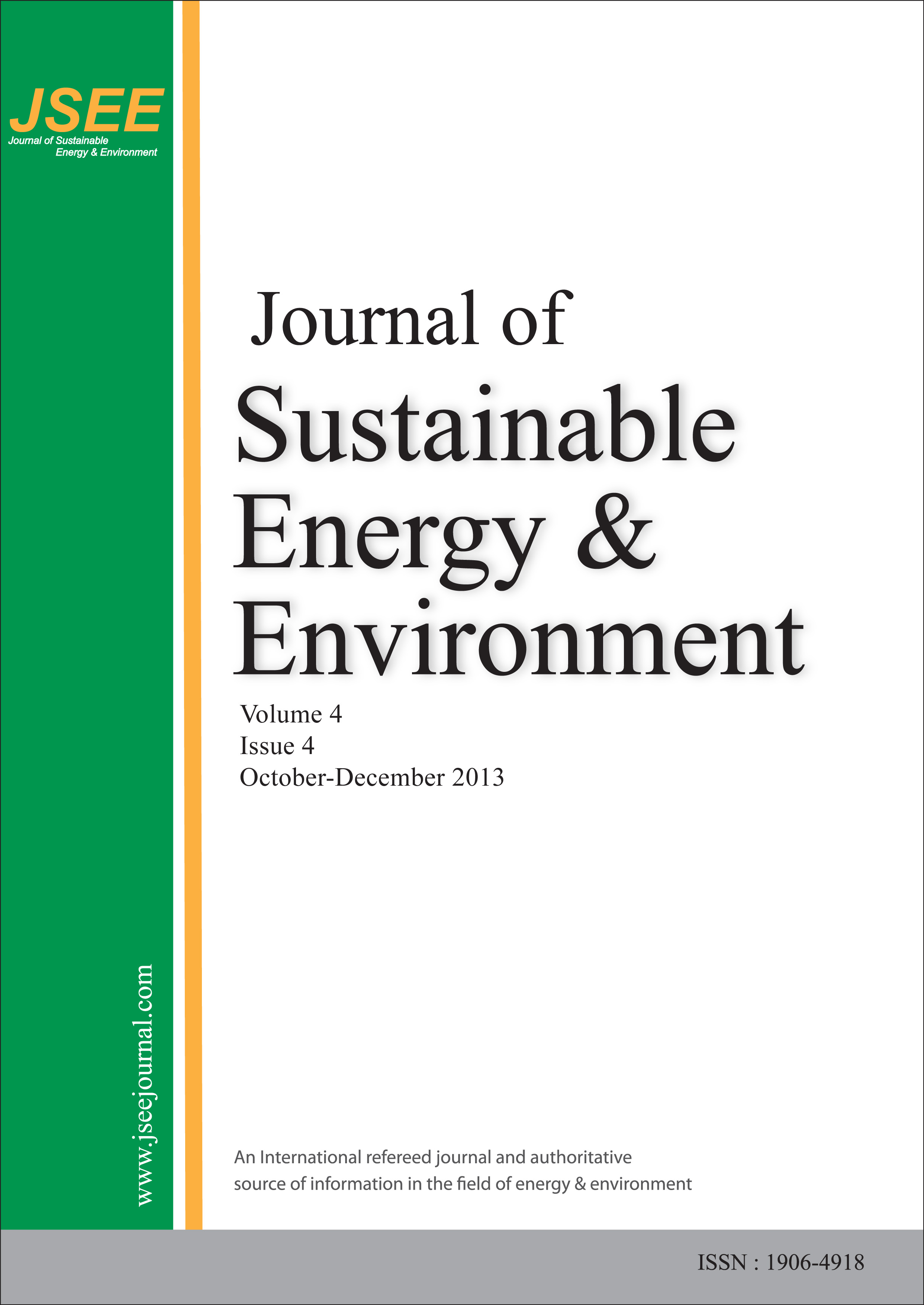
Narueporn Thamatheradamrong and Sébastien Bonnet*
Abstract: In Thailand, several biomass power plants are facing considerable opposition from local communities due to their concern over the perceived adverse health effects the pollutants they emit may generate. To address this issue, this study focuses on a small rice husk power plant (less than 10 MW) located in Surin province. The ISCST3 dispersion modeling tool was used to predict the concentration of stack emissions of SO2 and PM10 at varying distance from the source of emission. To assess potential health impacts on local communities, the risk assessment methodology was followed. The results showed that for the 3 communities targeted in these investigations, exposures to both SO2 and PM10 are safe with exposure concentration for the existing situation in the range, 0.083-0.171 μg/m3 and 0.062-0.121 μg/m3 respectively. It was also found that the exposure concentrations of SO2 and PM10 in ambient air that would lead to exceed the safe limit for health risk are 16.5 μg/m3 and 41.5 μg/m3 respectively. Since the concentrations of SO2 and PM10 in air are contributed by all sources of emissions and the rice husk power plant investigated in this study was found to contribute a minimal share, care in assessing inputs from all other emitting sources is required.Keywords: Human health risk, PM10, SO2, Biomass power plant, Thailand.

Sasithorn Wiriyanuwatkul, Amnat Chidthaisong*, Sudarat Tripetchkul and Chaowalit Silpathong
Abstract: This study quantifies the magnitude of land use change in Thailand during 2000-2007. Land use categories classified by the Land Development Department (LDD) were re-arranged to be consistent with the land use categories defined by the IPCC’s in its 2006 Guidelines for National Greenhouse Gas Inventories. During this period, there were the net losses of forest and cropland areas of 9,441.77 km2 (from 172,013 to 162,571 km2 or a decrease of 5.5%), and 8,461.85 km2 (from 285,811 to 277,349 km2 or a decrease of 3.3%), respectively. On the other hand, there were the net increases in the areas of grassland (1,705 km2 or 13%), wetland (4,823 km2, or 34%) and settlement (11,523 km2 or 45%). The loss of forest land was mainly through the conversion to cropland, and the loss of cropland was through conversion to settlements and forest. The conversion of forest land was mainly found in the northern region while cropland loss occurred mainly in central, east and southern regions. Conversion of land into settlement was found to increase in all regions of the country.Keywords: Land use, Land use change, 2006 IPCC Guidelines, Greenhouse gas inventory, Thailand.

Kaweewong Wongayara and Suneerat Fukuda*
Abstract: In this study, the behavior of gasification tar formed was investigated in a 100 kWth bubbling fluidized-bed gasifier using rubber woodchip as fuel. Tar yield and characteristics as well as the composition of product gas were monitored and correlated with respective gas residence time, which were varied by means of gas sampling at different positions, i.e. four along the height of the gasifier and one after the cyclone. At selected experimental condition (ER=0.33), the significant concentrations of CO and H2 were formed at 4.8 s, after which the increased concentrations of CO and H2 at longer residence times may be attributed to the tar reforming reactions and thermal cracking. The total gravimetric tar increased from 4.5 to 10.5 g/Nm3, when the residence time was increased from 2.5 to 9.8 s. The increasing gravimetric tar yield as the residence time increased inside the gasifier suggests that more tar was formed as it was exposed to high temperature. The concentrations of all tar major species also increased following the trend of gravimetric tar yield, but the ratio of smaller molecular weight materials increased at extended residence time. This therefore suggests that longer residence time would be preferable as it would allow more time for the reaction of tar vapor to crack into smaller molecular weights and to form more product gases.Keywords: Tar, Biomass gasification, Bubbling fluidised-bed gasifier, Residence time.

Serm Janjai*, Worrapass Promsen, Itsara Masiri and Jarungsaeng Laksanaboonsong
Abstract: This paper presents maps of the monthly and annual mean wind speed and direction at the height of 50 m above the ground in Cambodia. The wind speed is calculated by the Karlsruhe Atmospheric Mesoscale Model using atmospheric data from NCEP/NCAR for the years 1977-2006 as input data. Average wind speed is calculated by using the wind class approach. Wind data from four new wind measuring stations in Cambodia and from nearby wind measuring stations in Vietnam and Thailand are used to validate the model. The validation results show that the values of the calculated and measured wind speeds are in reasonable agreement. The values of wind speed obtained from the model are then used to generate the wind resource maps. The annual map reveals that relatively high wind speed areas are situated in the northeastern part of the country with the maximum annual mean wind speeds of 5-6 m/s.Keywords: wind energy, atmospheric mesoscale model, Cambodia, wind resource map.